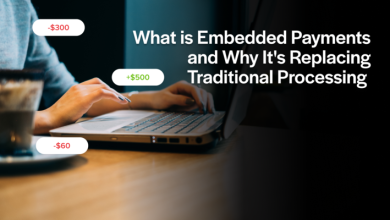
Web3 has reached an inflection point where innovation isn’t just about adding new features but about reinforcing the very foundations that make those features viable, especially with different chains looking to expand into new capabilities, forcing their underlying infrastructures to adapt and evolve accordingly.
Nowhere has this been more evident than in the XRP Ledger (XRPL) ecosystem, which is known for its cross-border payment efficiency. Recently, the platform embraced Ethereum-style smart contracts through a new EVM sidechain, providing an “always-on” connectivity option that modern dApps and even autonomous software “agents” require.
To elaborate, the sidechain lets developers deploy Solidity-based dApps and even port over existing Ethereum projects, all while tapping into XRPL’s deep liquidity and 12+ years of operational stability. Furthermore, it operates using a Proof-of-Authority (PoA) consensus mechanism, prioritizing speed and efficiency such that instead of open mining or staking by anyone, a set of vetted validators produces blocks (including over 25 well-recognized companies and organizations).
Pocket Network’s Decentralized Infra Patch for XRPL
Builders need infrastructure that unlocks real-world usages and is reliable, or APIs go down, even the most advanced blockchain capabilities can become unusable instantly.
The Pocket Network addresses this need by decentralizing blockchain access and rewarding a distributed community to maintain infrastructure, creating an open marketplace for data and RPC services, where one node can execute a function on another seamlessly without relying on any single/centralized provider.
Over the last five years, this model has proven its viability with the Pocket Network processing over a trillion API requests across 60+ blockchains to date, from supporting networks from Ethereum, Solana, Polygon, and now XRPL’s EVM sidechain.
Pocket was a launch partner during the XRPL EVM sidechain rollout, along with Pocket core contributors Grove, serving as an official infrastructure launch partner.
From the devnet and testnet stages through the mainnet launch, Pocket Networks ecosystem provided enterprise-grade RPC nodes and helped ensure the new sidechain was always accessible to developers. Grove also joined the ranks of XRPL sidechain’s initial validators, contributing to the network’s PoA consensus group. By the time it went live, developers had a public RPC endpoint ready (i.e. the first external RPC service for XRPL’s EVM).
To put it simply, anyone building on XRPL’s EVM could plug into a permissionless, globally distributed API service from day one, rather than having to rely on a single corporate API provider or setting up their own servers.
Looking Into the Nitty-Gritty of Things
The significance of Pocket Network’s support seems to be twofold. For starters, it bolsters reliability and scale because with many independent nodes servicing requests, applications tapping into XRPL EVM are less likely to encounter downtime or rate limits. Traffic can be load-balanced across Pocket’s node network, which grows or shrinks based on demand via market incentives.
In layman’s terms, as XRPL EVM’s usage increases, the infrastructure can scale out in a decentralized manner, a stark contrast to the bottlenecks that can occur when too many projects rely on one RPC vendor.
Secondly, Pocket’s model enhances censorship resistance and openness as no single entity controls the majority of XRPL EVM endpoints, making it much harder for any actor to selectively restrict access or data.
Developers don’t even need permission to use these nodes because they can simply route their application’s calls through Pocket’s network and trust that, because node operators are economically incentivized to serve data accurately. This permissionless accessibility is a philosophical complement to XRPL’s vision of an open, global value exchange network.
In fact, by helping “patch all the potholes” on XRPL’s new road, Pocket fills a critical gap by providing what the XRP Ledger alone did not natively have, i.e., a market-driven way to encourage anyone, anywhere to run XRP infrastructure.
Building a Future of Humans and Autonomous Agents Alike
From the outside looking in, XRPL’s growth story is no longer just about ledger upgrades or legal clarity around XRP; it’s also about nurturing an ecosystem of support. Their collaboration with Pocket Network exemplifies this, turning what could have been a standalone sidechain launch into a broader push for scalability and openness.
Ultimately, what’s unfolding is more than just an upgrade to a single network; it’s an example of how the “new internet” of value might operate with diverse networks interconnecting, human and machine AI Agent actors transacting, and a decentralized web of infrastructure quietly ensuring that the digital world never skips a beat.



